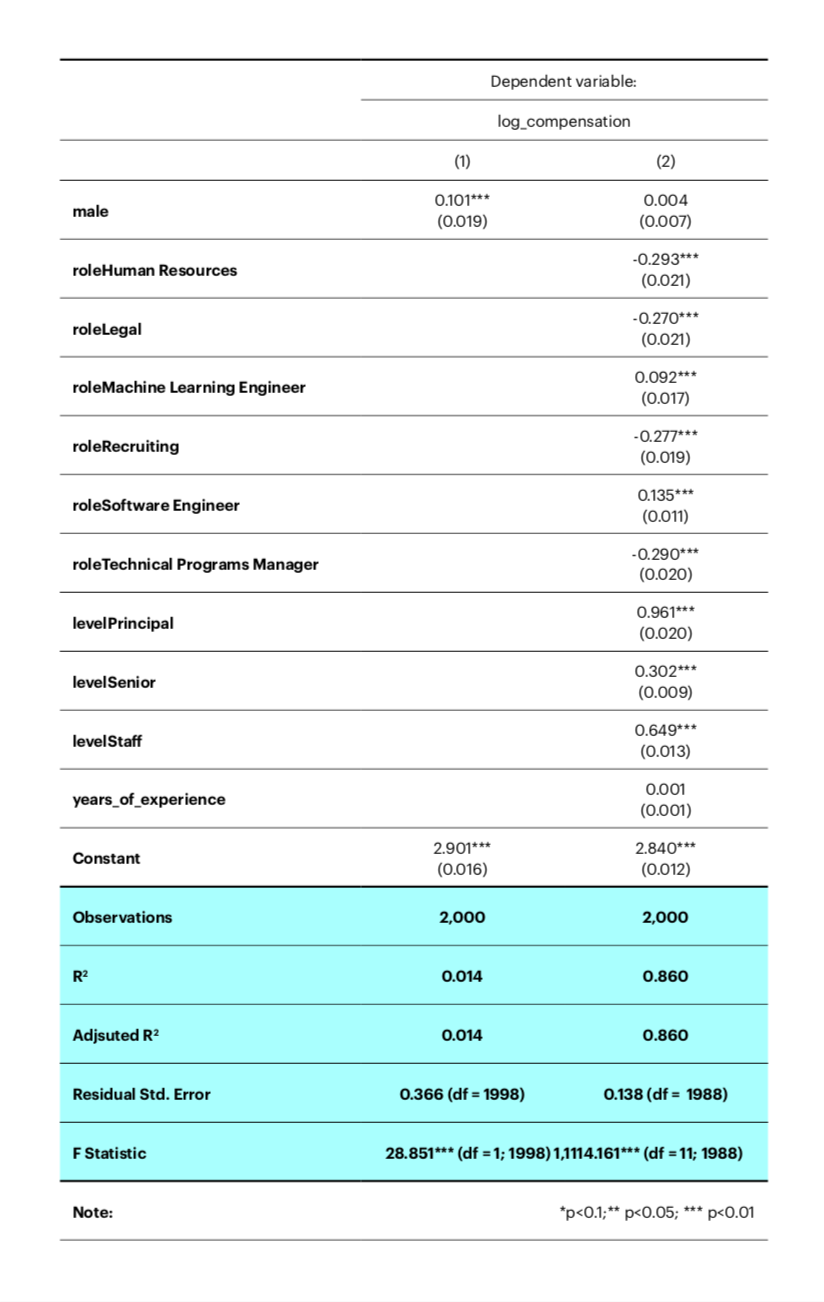A Head of Diversity & Inclusion Shares How to Run a Pay Equity Analysis
Pay equity analysis isn't as simple as it seems. Here's a step-by-step process by Steven Huang of Culture Amp.

At Culture Amp, we run a pay equity analysis toward the end of every merit cycle to identify and address compensation imbalances. It’s part of ensuring that we work towards an equitable employee experience and we encourage every organization, no matter what size or industry, to consider running a pay equity analysis. I’m going to show you a popular approach to pay equity with regards to gender in this article.
A gender pay equity analysis is, unfortunately, not as simple as it seems. You can’t simply compare the average of what men make to the average of what women make; you need to take great care in making sure you’re comparing apples to apples. That is, you’ll want to compare what men make to what women make in the same job level, department, and years of experience. There are other factors to consider as well–such as if your workforce is distributed across locations with varying compensation bands.
Start with a clear objective of what you want to answer. For the purpose of this example, let’s answer this question: “Is there a systematic bias in how Men vs. Women employees are paid?”
Step 1: Prepare your data and run a Regression Analysis
Get intimate with your data–use a discerning eye and make sure no outliers exist, currency is equivalent, pay period is consistent, etc.
To capture the gender pay gap, create a dummy variable with ‘1’ for male and ‘0’ for female employees. Run your regression. The coefficient for this dummy (male) variable will provide the gender pay gap between females and males (reference level is female). Look at the log of the total compensation value to get the best approximation for the pay gap.
Step 2: Consider the results of the unadjusted and adjusted model
When your regression model is built with just one variable as a predictor of compensation–gender, in our example–you have an “unadjusted” gender pay gap.
Run a Regression to account for the differences in other demographic factors in your data set that uncover where bias may exist.
Compare and evaluate your two models: Is there a gender gap? If so, does it still exist in the presence of other demographic factors? Looking at the regression coefficient for the gender variable, you can assess the severity of the gap.

Taking into consideration all of the demographic variables–level, years of experience, and role–that may impact compensation in the example above, gender is not a significant factor. There isn’t sufficient evidence to make the conclusion that systematic bias exists. The unadjusted model is rarely robust enough to come to this conclusion!
Step 3: Interpret your results and share them in a way your organization can understand
One thing we’ve observed at Culture Amp is that, even in organizations where pay equity is taken very seriously, there can be a misalignment in the perception of it.
For example, many engagement surveys ask employees if they believe compensation is fair and even when results confirm it is and there is no systematic bias, there can still be a perception that a pay gap exists. That’s why it’s important to communicate the results of your pay equity analysis. A good People Analyst understands that no matter how robust your analysis is; it has no impact unless it can’t be distilled into an easy-to-understand visualization and/or easily communicated by a trusted executive to other stakeholders.
Step 3 (and a half): What if systematic bias does exist in my organization?
The example in Step 2 is an ideal one. The reality is that most organizations do have a pay gap and it affects the livelihoods of any demographic group that suffers from this bias.
To begin closing the gap, examine your HR systems and processes where compensation is determined:
What negotiation processes are allowed during the new hire process?
Does your performance management philosophy utilize measures that are highly susceptible to bias, such as measuring “potential?”
Does your performance management tool calibrate across gender? (hint: it should)
Are compensation adjustments allowed off-cycle? If so, examine the circumstances
To be clear; there are no check-the-box solutions to the above questions. The most important thing to consider is how you want to address how your systems and processes can unintentionally contribute to systemic inequalities.
You should rely on HRBPs to diagnose pockets in the organization for individual adjustments where needed (they will likely want to loop in your legal team). Addressing systematic bias should be a responsibility of the office of Diversity and Inclusion, but if that doesn’t exist yet, then look to the leader of Talent and Rewards.
Step 4: Have a facilitated company discussion
Pay equity analysis is a valuable tool in a portfolio of diversity management strategies. What D&I professionals are beginning to understand is that the presentation of data and facts must be accompanied by healthy discussion; this is because the emotional consequence of equity is equally as important as the numbers.
Buy-in on pay equity will be accomplished by a D&I leader who is willing to create a forum for vulnerable conversations about what pay equity at your organization should look like at a deeper human level.
Get Outsmart content straight to your inbox
Subscribe to the People Insights Monthly newsletter for actionable insights and stories.
Subscribe now